The “Wow, Pictures!” Tabloid Coverage of Trump’s Stolen Documents Is as Bad as Conspiracy Mongering
The other day, I mined the documents and photographs released in the government’s response to Trump’s bid to throw out his indictment based on a complaint that the FBI failed to preserve the order of documents in boxes.
Doing so, I showed that Trump had stored ten of the documents charged against him — including one classified under the Atomic Energy Act — under bubble wrap and a Christmas pillow.
I had to do a fair amount of work to figure that out, building on work I did years ago. I had to cross-reference the item number (28, as shown in the picture) with the box number (A-73, which you can find on the warrant return) to determine which box this was. I then cross referenced that with the table of charged documents in the filing.
Then I annotated the picture to describe which charged documents were found in the box myself. You can cross reference that with the indictment to learn what kind of documents are included in the stack in the picture.
All that under the bubble wrap and the Christmas pillow!
But that’s not why DOJ included the picture in its filing. DOJ included this picture, along with the two other pictures in that exhibit and the two in this exhibit, “to provide a sense of the variety of items in the boxes.” And Jack Smith’s team did that to show that FBI agents who conducted the search had no way of knowing that Trump knew (according to the interview of a former White House aide of his) precisely what was stored in which box, and therefore no way of knowing he might cite document order in his own defense.
Furthermore, this is not a case where reams of identically-sized documents were stacked neatly in file folders or redwelds, arrayed perfectly within a box. To anyone other than Trump, the boxes had no apparent organization whatsoever. The boxes contained all manner of items, including, for example, papers of varying sizes, from folded large-format items to tiny notes; clothing; picture frames; shoes; magazines; newspapers; newspaper clippings; correspondence; greeting cards; binders; and Christmas ornaments. The photographs attached as Exhibits 3, 8, and 16 provide a sense of the variety of items in the boxes. The notion that the precise ordering of materials within these boxes possessed any exculpatory value that would be apparent to the Filter Team when they opened the boxes is absurd.
These pictures also corroborate what filter team agents said about their efforts to retain the order of items in these boxes as they searched them for any potentially privileged documents, such as Agent 5’s description that it was impossible to retain the order because of the “[loafers], newspapers, post-it notes, golf balls, etc” she found in the boxes. For the most part, these were not boxes of file folders (like the one found in Joe Biden’s garage, the order of which FBI also disrupted; they were boxes of Christmas pillows and bubble wrap, and that’s one of several reasons why the document order within boxes was not maintained in all boxes.
There was a purpose to these photos, and it went well beyond slob-shaming the former President or just showing how DOJ released these pictures to portray Trump as chaotic. The photos and other exhibits make a specific rebuttal to an argument Trump is making: that FBI willfully mixed up document order to undermine a foreseeable future defense that was radically different to the one — that he knew the documents were there, but had declassified everything — he had been making before the August 8, 2022 search.
There was a purpose to these photos: To rebut a range of conspiracy theories designed to undermine rule of law and truth itself.
The coverage from most mainstream journalists (I excuse those who were stuck in Aileen Cannon’s courtroom who just threw up a post after that tedium) consisted of little more than “ooh, pictures!” which quickly turned into slob-shaming that failed to provide any context about the legal significance of the exhibits or the chain of custody they depicted.
There were several other things the filing and pictures were meant to explain: notably, what and how cover sheets got put into boxes, and — because Julie Kelly is a shameless propagandist — whether the FBI brought cover sheets for the sole purpose of framing Donald Trump.
This conspiracy theory started when Stan Woodward spent 1:50 examining physical document boxes. He took this picture, of Box A-14, which has only around 35 documents in it, all stacked up neatly, but otherwise spent little time examining this box — just 6 minutes.
This box was originally segregated because it had potentially privileged documents in it. Days later, an FBI agent discovered a single document marked with Top Secret markings. That document, dated May 6, 2019 and describing a White House intelligence briefing, is charged in Count 4 of the indictment.
Woodward made no claim that the cover sheet in this box, wherever it is, was out of place.
Woodward spent more time reviewing box A-15: 18 minutes. He didn’t take a picture (but the FBI did). Box A-15 was found with a binder in it, containing 21 Secret documents and 11 Confidential documents.
When Woodward inspected this box, he discovered that the order of the cover sheets marking classified documents reflected in the scan done for the Special Master review conflicted with the order he discovered them when he reviewed the box itself.
For this box, because it was one originally inspected after the FBI ran out of cover sheets they brought with them (they didn’t expect so many classified documents!), there were three sets of cover sheets used with the document. The generic cover sheet marking the highest level of classification mark found in the box, depicted in the picture above, which the FBI took to document its search; hand-written cover sheets they used to mark individual documents after they ran out of the normal cover sheets the day of the search;
And cover sheets marked with each individual document index ID (the “ccc” in the picture) after they indexed everything.
The documents in this box were indexed as “ccc” through “iii” and then “www” through “tttt.”
For this box, each of those three cover sheets served a different purpose. The first played a role in an evidentiary picture, to document the search, and yes, the FBI put that cover sheet there on purpose to both cover up classified information and to mark how sensitive it was.
The second was a place marker for each document taken from the box and kept more securely, and the third was a cover sheet to track each individual classified document.
But this box, in particular, ended up getting particularly jumbled because there were so many classified documents all appearing in a binder.
11 The initial placeholder sheets that were put in Box A-15, unlike most of the others, included only the classification level and the number of pages. Because of the large number of documents with classification markings (32) in box A-15, which were found in a binder of information and therefore similar in nature, it was not possible for the FBI to determine from the initial placeholder sheets which removed documents corresponded to which classified document. In this instance, therefore, the FBI left the initial handwritten placeholder sheets within the binder to denote the places within the binder where the documents with classification markings were found. The FBI provided this binder for scanning at the top of the box. In addition, the FBI placed in the box 32 new placeholder sheets representing the 32 documents with classification markings in the binder. It placed them where the binder was within the box when the investigative team obtained it. None of the 32 documents is charged.
I don’t excuse that — the FBI flubbed boxes in both the Biden and Trump investigations. But as noted, in this case, it won’t be relevant to any defense Trump will offer because these documents aren’t charged.
The fact that FBI used cover sheets to mark and cover the contents of classified documents when documenting the search (as in the two pictures above) led propagandist Julie Kelly to imagine that the original photo released in an exhibit back in August 2022 must be a set-up, with the FBI using a bunch of classified cover sheets solely to make Donald Trump look worse than he was.
Julie got way over her skis claiming that Jay Bratt lied when he introduced a reference to the picture by saying that, “Certain of the documents had colored cover sheets indicating their classification status.”
The photo was a stunt, and one that adds more fuel to this dumpster-fire case.
Jay Bratt, who was the lead DOJ prosecutor on the investigation at the time and now is assigned to Smith’s team, described the photo this way in his August 30, 2022 response to Trump’s special master lawsuit:
“[Thirteen] boxes or containers contained documents with classification markings, and in all, over one hundred unique documents with classification markings…were seized. Certain of the documents had colored cover sheets indicating their classification status. (Emphasis added.) See, e.g., Attachment F (redacted FBI photograph of certain documents and classified cover sheets recovered from a container in the ‘45 office’).”
The DOJ’s clever wordsmithing, however, did not accurately describe the origin of the cover sheets. In what must be considered not only an act of doctoring evidence but willfully misleading the American people into believing the former president is a criminal and threat to national security, agents involved in the raid attached the cover sheets to at least seven files to stage the photo.
Classified cover sheets were not “recovered” in the container, contrary to Bratt’s declaration to the court.
The frothy right has been trying to claim this photo was a frame job from the start. But Julie’s theory was a particularly stupid version of the conspiracy theory. If the idea was that cover sheets make the documents look worse than, say, visible classification marks like the ones visible if you look more closely, and the more cover sheets the more useful for framing Donald Trump, why not use cover sheets on all of them? In a piece that otherwise struggled with the difference between [Box] Two and [Box] Ten, Julie counted seven cover sheets in the picture. I think there are at least eight (plus another form of cover sheet) but — another data point that undermines her conspiracy theory — a Secret cover sheet is buried in the middle of the stack, useless for the propaganda value Julie’s conspiracy theory has dreamt up.
While last week’s filing didn’t take on Julie’s conspiracy theory head on (notably, Trump has not adopted her conspiracy theory, which should tell you something), it did include the materials to understand how the initial evidentiary picture got put together.
As noted in the Jay Bratt language Julie quotes, the contents in that picture were found in a container in the “45 Office,” what Mar-a-Lago staffers called Trump’s office. The warrant return described the box holding the most sensitive documents, item 2, as a “leatherbound box of documents.”
That’s one of many ways we can be sure that this picture — which the “ooh pictures! people were very excited about mostly on account of the Diet Coke bottles, which I think short-changes the cult Donald Trump picture in the right side — depicts the same box.
The next picture in that exhibit shows how that same box got labeled Box 2, the box that Julie the Propagandist would one day confuse with Item 10.
Another picture shows what the top of the box looked like (since this is post taint search — the unsigned Sandy Hook letter that some “ooh photos” journalists claimed must be a super sensitive document, on account of hiding the name of the child gunned down at Sandy Hook — may not have been on the top of the stack when the FBI first found it).
The filing even includes the photo log showing how the photographer took pictures first of the closet (Room F), then of the box, then of the contents of the box.
Here’s that evidence photo again, which would have been taken in the foregound of the wide view picture above, with the rolled up paper and the seeming book now appearing at the top of the picture, and the tacky dresser on the left.
The picture was misleading when released, but not for the reason Julie the Propagandist suggests. It was misleading because it suggested that Trump put his Top Secret documents in with his Time Magazine covers. He didn’t. He put them in a different box, a few feet away, also in his office closet with the awful carpeting.
The filing that Julie the Propagandist claimed vindicated her conspiracy theory does the opposite. The government filing reiterates the claim — the claim that Julie the Propagandist claims caught Jay Bratt in a lie — that “Certain of the documents had colored cover sheets indicating their classification status.”
The 45 Office consisted of the “ante room,” where Trump staff members had desks (Room B); Trump’s office (Room C); a closet attached to Trump’s office (Room F); and two bathrooms (Rooms D and E). Ex. 9. Entry photos were taken of the ante room, Trump’s office, and both bathrooms. Id. Filter Team agents then discovered in the closet a blue, covered, leatherbound box full of various papers, including numerous newspapers, newspaper clippings, magazines, note cards of various sizes, presidential correspondence, empty folders, and loose cover sheets for classified information, as well as documents marked classified. Ex. 10. FBI 13 conducted the privilege review of this box, with some brief assistance from FBI 5. ECF No. 612-11 at USA01291471. FBI 13 was careful to return all items to the box after reviewing them, but did not maintain the order of the items. Id. at USA-01291472; Ex. 11 at USA-01291691. FBI 13 found no potentially privileged materials in the box. ECF No. 612-1 at USA-01291485. After FBI 13 placed all of the contents of the blue box back in the box, an ERT photographer took photos of the blue box with the cover off. Ex. 12. FBI 13 alerted the Case Team that s/he had found documents marked classified, and after s/he completed his/her privilege review, two Case Team agents reviewed the box and found numerous documents with classification markings, some of which had classification cover sheets already attached, as well as loose classification cover sheets. The Case Team agents seized the documents marked classified (as well as any cover sheets already attached) and segregated them. As they extracted the seized documents, they inserted placeholder sheets where they found them. [my emphasis]
To be sure, there’s still a step of this progression that the government didn’t include in its filing (again, this is not the primary focus of the filing because Trump has not adopted Julie the Propagandist’s conspiracy theory, at least not yet, and — one exhibit included last week also made it clear– Trump’s people had turned on CCTV surveillance before the search started, and investigators knew that).
Trump’s initial MTD included notes and last week’s filing includes a follow-up interview with Agent 13. Agent 13 was the primary person who did the filter search of the closet. The original notes describe the agent, “does recall seeing cover sheets inside box[,] don’t know one way or other if cover sheets in photo came from box.” In the follow-up, the agent described that the lid to the leatherbound box was on the box when they found it (meaning the evidence pictures thereafter reflect what happened after the filter search).
That testimony is utterly consistent with the picture: that at least some of the cover sheets in the picture are the ones Agent 13 found when they did the search. But you’d need to add the testimony of the photographer and the two investigative agents to learn whether all of them were, or learn whether any of the loose cover sheets in the box were also used in the photo.
Nevertheless, it’s a pointless conspiracy theory. Julie the Propagandist has made a big deal out of cover sheets used in the way cover sheets are supposed to be used: to convey that something is classified and prevent any incidental exposure. But the picture doesn’t, primarily, show cover sheets. Indeed, it shows at least ten documents without classified cover sheets (covered instead with blank cover sheets), virtually all with classification markings visible.
More importantly, what the filing and the original photo both show the chain of custody of a box that — no amount of squealing about cover sheets disputes — clearly shows at least 22 of the 24 documents alleged to have been found in the box, most with classification markings visible.
Tracking what these exhibits do explicitly and — with more effort — implicitly takes time. But responding to conspiracy theories with facile reporting squealing, “Ooohh pictures” serves nobody, except media outlets looking for free reporting and conspiracy theorists hoping to turn truth into a both-sides dispute.

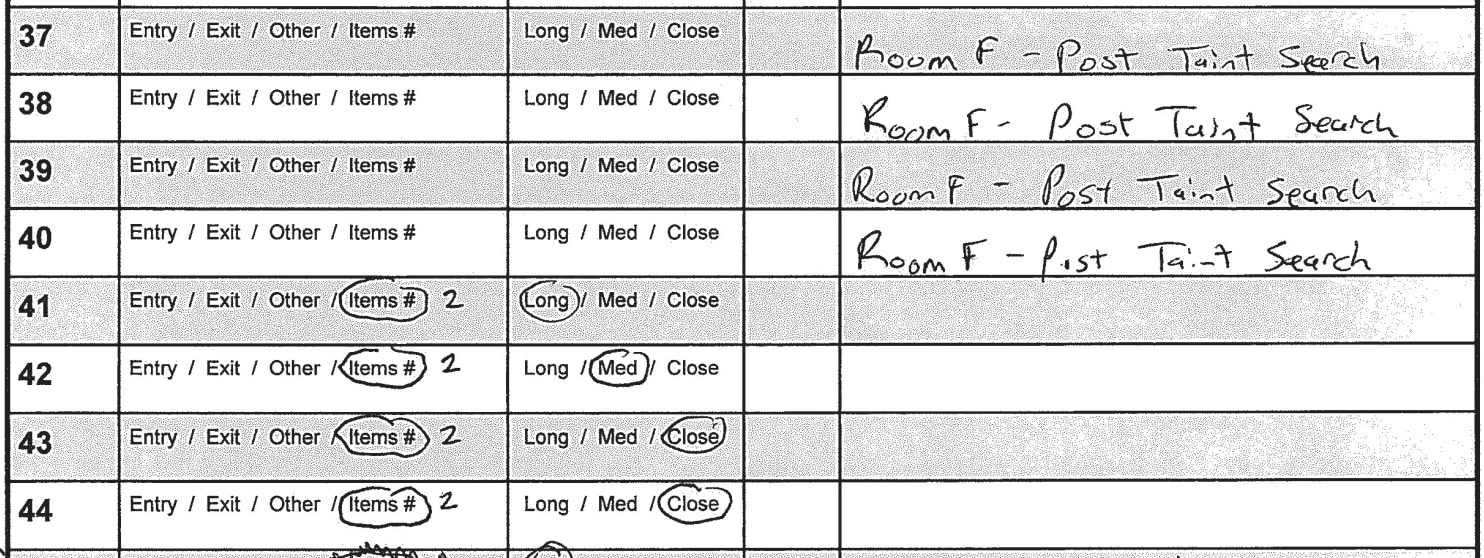
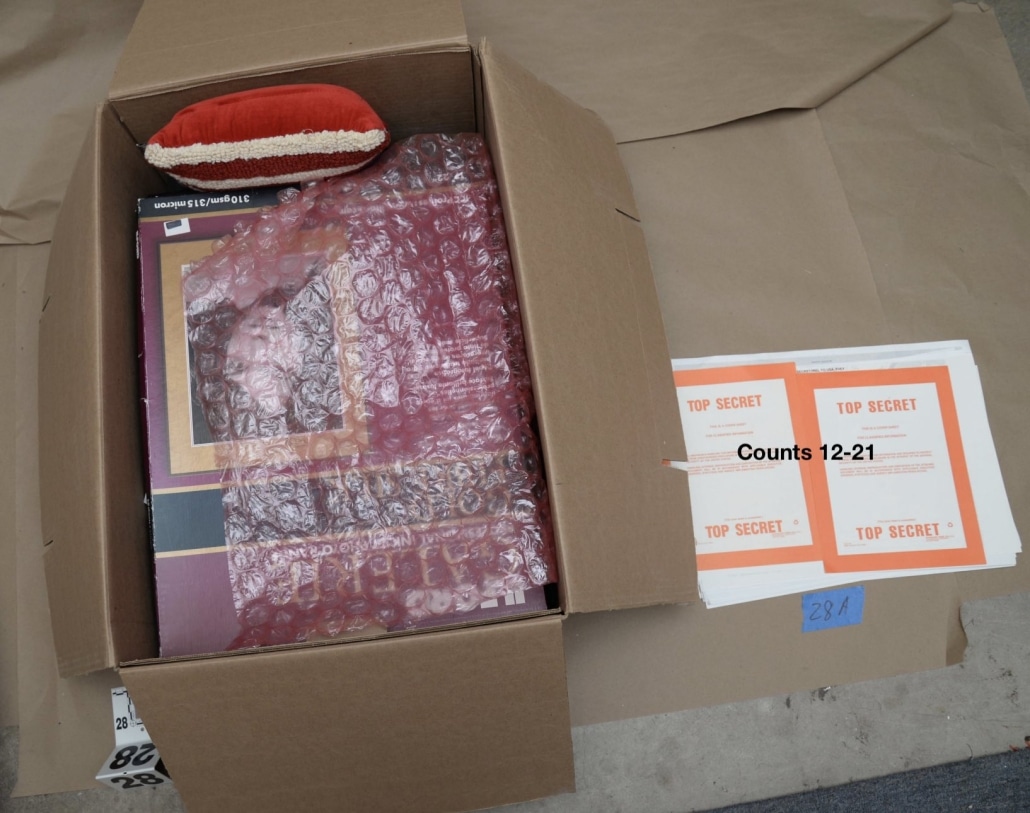



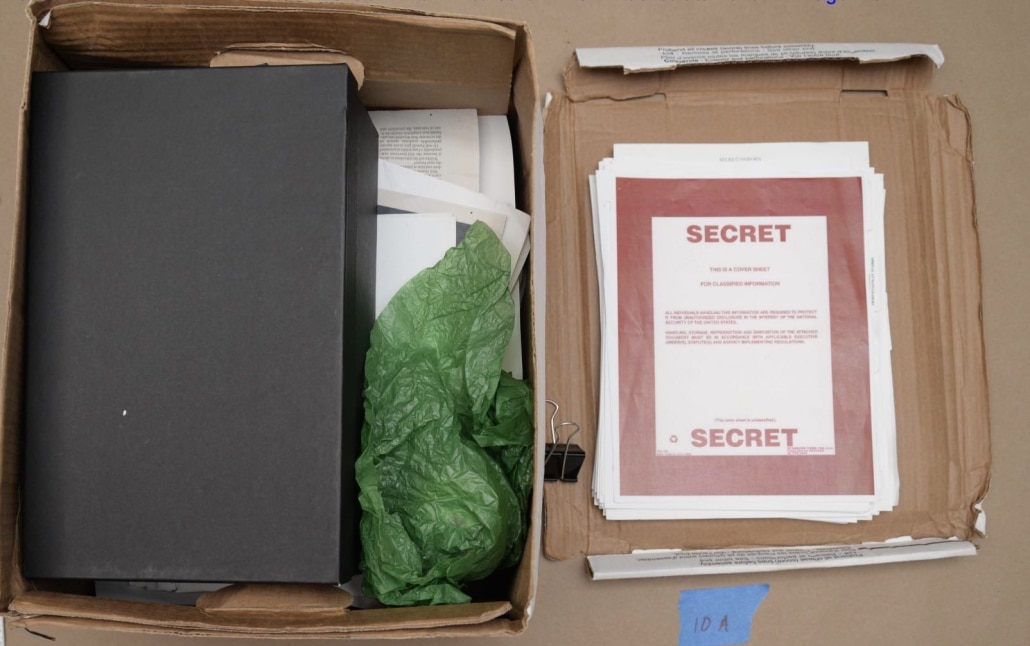
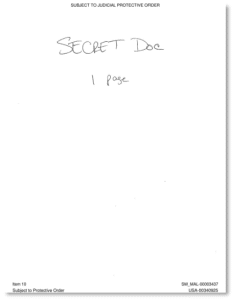
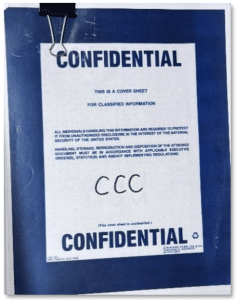
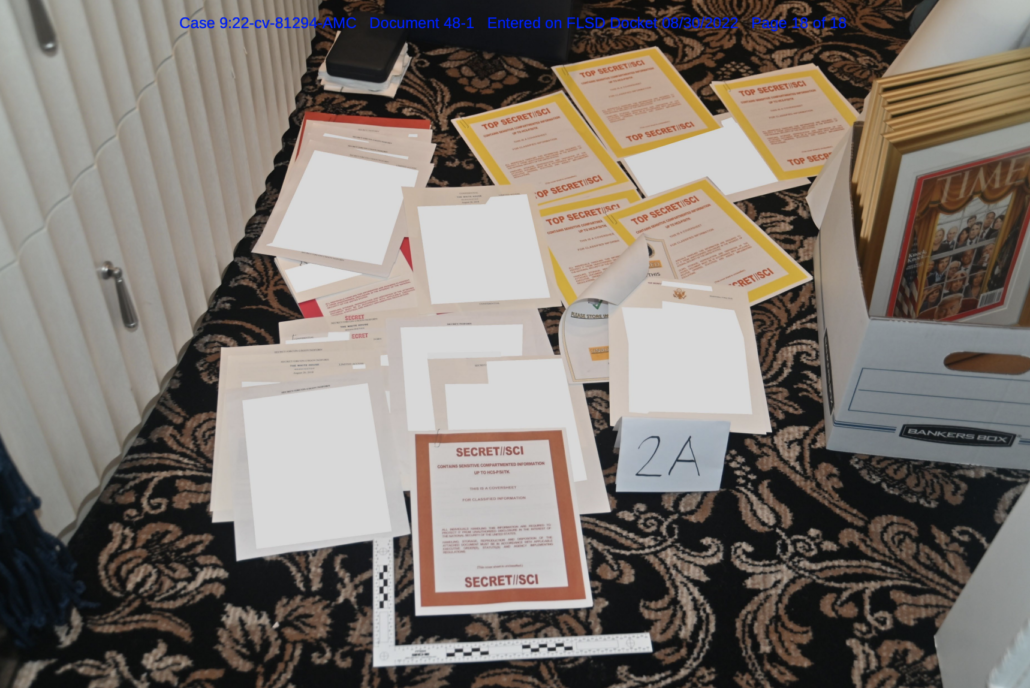
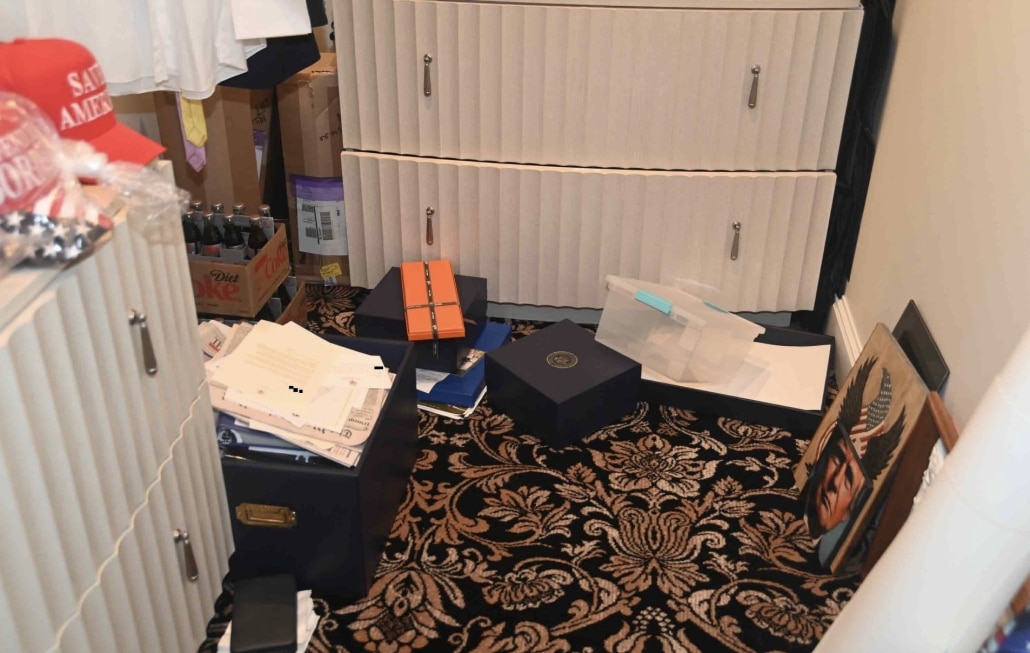
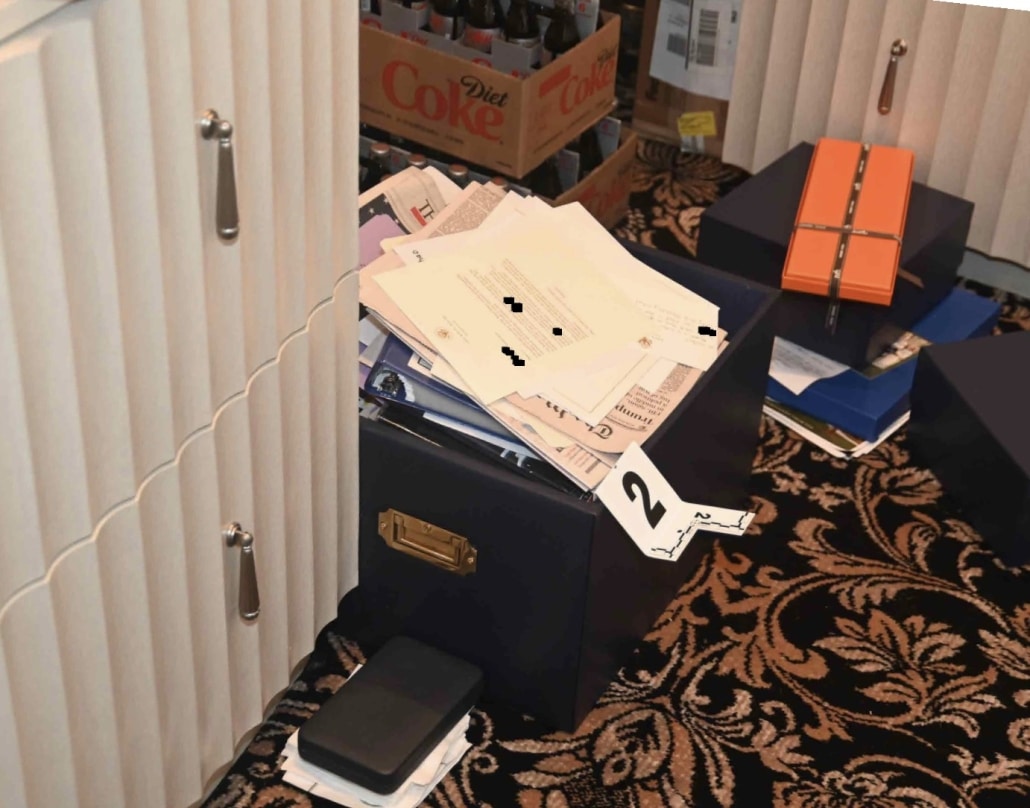
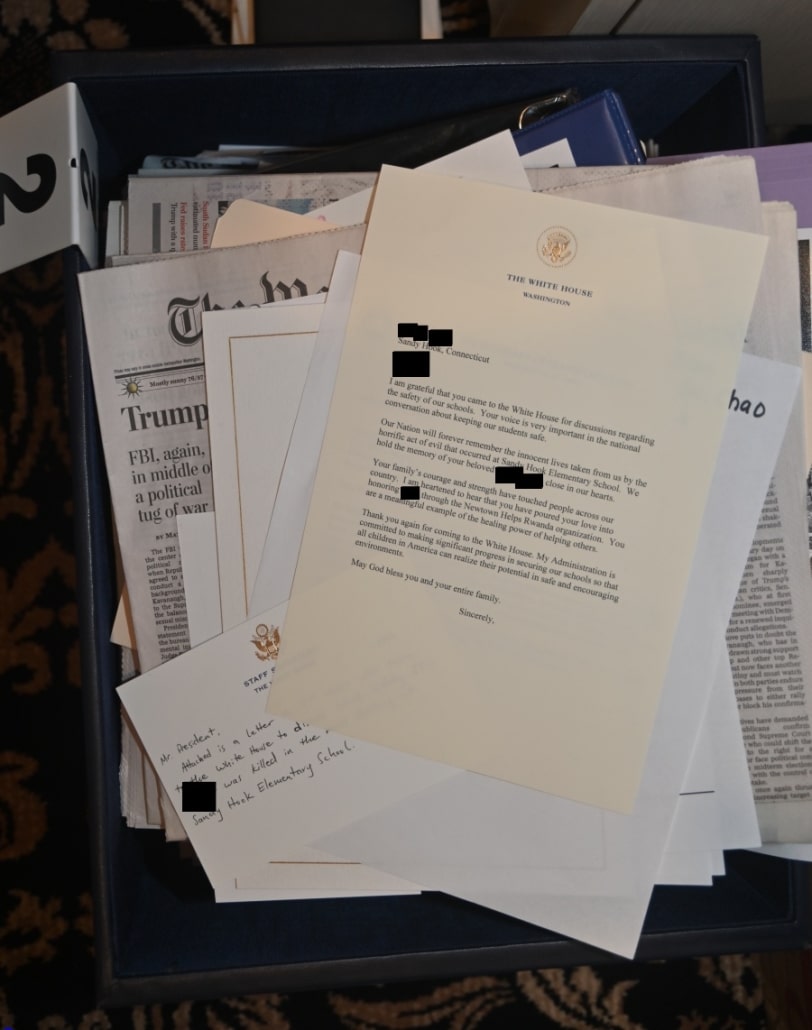
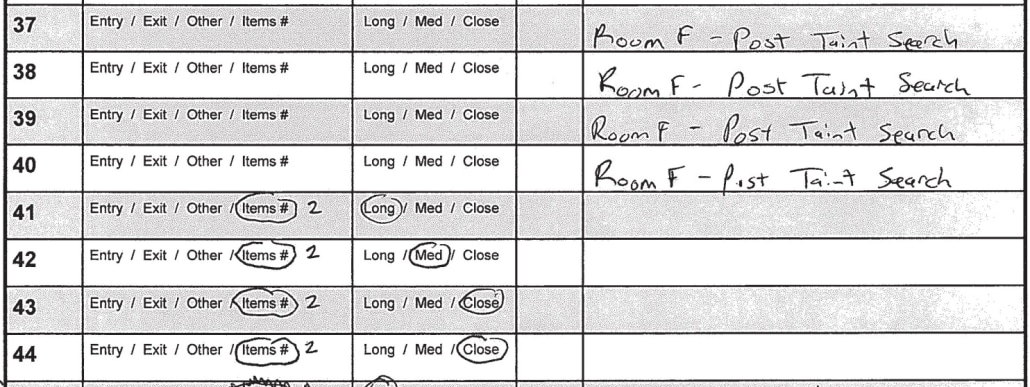




Have you or Nicole Sandler ever issued invitations to ‘journalists’ like Julie Kelly to appear on the “Emptywheel Friday …” podcast? While there’s no way to cure their propensity to lie, it is possible some of them might be cured of their ignorance.
It would also be entertaining to listen to them being schooled.
Give an already overexposed liar another platform on which to lie?
IMO, the Fridays with Empty Wheel hour goes by so quickly I’m left clamoring for more elucidation, not less.
I don’t understand the entertainment value you suggest.
I think it would be highly entertaining to listen to Marcy Wheeler force a dumbshit to defend their dumbshitedness.
You can see it being done on her social-media pages.
The entertainment mindset is one of the primary reasons journalism is on the ropes.
Holy Cripes! This is what responsible, thoughtful journalism is. Thank you for not assuming we are shallow readers in search of entertainment tabloid “Ooooh, coke bottles” celebrity articles on a national security breach caused by a former US Republican President and a current NYT editorial board sanctioned GOP candidate who (besides being old and a liar) is an actual national security threat as evidenced by the handling of national secrets.
Much like his Gish Gallop of lies during the debate caused Biden problems, and the over 30,000 documented lies during his Presidency that the press (mostly) ignored, the sheer number of classified documents that Trump had in his possession overwhelmed the FBI agents trying to document what he had stolen. The sheer volume of his bad behavior is part of his defense on every occasion, it seems.
Bad, lying and abusive behavior rewarded by the GOP and his religious followers.
It supports Penn Jillette’s comment about TFG: “No matter how bad you think he is, he’s worse.”
His comments about Pelosi and security at the Capitol for 1/6 proves that…
The sheer chaos evidenced in the photos and file storage “system” reflects the chaos, or intentional chaos?) of Trump’s mind. When one thinks that these boxes were handled by various members of his hotel-whatever-home at Mar-a-Lago, most of whom did not have security clearance, along with the fact that he mostly hires workers from outside the US who come on a temporary basis because of visa requirements, this represents opportunities for the contents to be copied or viewed, with information passing on to our enemies. It staggers the mind to think of what Putin, and others might know about our vulnerabilities and security measures.
It seems an extension of how Trump manages to deflect charges by chaos in his speech, his assignments to his employees, his legal problems, his financial dealings. It’s such a mess, that it resembles a pile of rubble in Gaza after a bombing strike.
Judge Cannon’s dithering has allowed SC Jack Smith to reveal publicly, bit by bit, the Trump documents perfidy. If only the news media would pay closer attention, as Marcy Wheeler has, the electorate would not need to have a criminal conviction to know that Trump, in all probability, willfully retained the documents, recklessly stored them, and obstructed the FBI.
The news media seems interested in only the finality of a trial. It’s the old horse race analysis instead of news analysis.
I’ve read somewhere a lawyer suggesting that, if, as expected, the Supreme Court bounces the immunity issue back to the trial court for argument on whether the conduct in question was within the outer bands of Presidential acts, the trial court could conduct a hearing which would amount to a mini-trial. If that is the case, the electorate will have a lot of revelations before the election. If the news media covers it, of course.
https://www.lawfaremedia.org/article/prepare-for-a-2024–mini-trial–in-trump-s-d.c.-prosecution
Why do I see this as just a game of ping-pong? The SCOTUS sends it back to lower court for a rehearing. Couldn’t the loser in that lower court hearing re-appeal back to SCOTUS?
I’m waiting for the prosecution to present videotapes, not just photographs, of their entry and search of the premises and boxes. Hopefully, one or more agents did that.
In most searches done by agencies of any size, videotaping has become a part of the search/processing of a scene. It’s mostly for liability reasons. It might not really show contents or context because the boxes were not all open before arrival. Many of the details of a scene are discovered after moving things. In this case by opening boxes and taking items out. Besides much of search video is of poor quality-in my experience.
How often is the name of the classification itself redacted as in count 17? That seems crazy to me that a classification label could be so sensitive it can’t be publicly known?
Something like 8 of the charged docs against Trump have redacted compartments.
https://www.documentcloud.org/documents/23888947-230727-superseding
I don’t know how often it is done, but it’s not crazy at all, especially for a document marked TOP SECRET. Here’s how a document is deemed worthy of that classification level throughout the government: “”Top Secret” shall be applied to information, the unauthorized disclosure of which reasonably could be expected to cause exceptionally grave damage to the national security.”
Once you get past the main classification level (Confidential, Secret, Top Secret), there are a host of control codes that reflect other aspects of how the document is to be protected, related either to the source of the information or those with whom it can or cannot be shared. These might be SCI designations like HUMINT, Special Access program codes, or REL TO xxx (release allowed to xxx) or NOFORN that prohibits sharing with any foreign nationals. Some codes are so rarely used, that knowing they are on a particular document might allow someone to connect some dots with other intelligence in ways that the IC does not want connected.
More here from NARA: https://www.archives.gov/federal-register/codification/executive-order/12356.html
More here from DNI (manual declassified in 2016): https://www.dni.gov/files/documents/FOIA/DF-2015-00044%20(Doc1).pdf
[ETA: Yes, I know the link under this URL is busted, because for some reason WordPress does not include the “.pdf” inside the link. No idea why, but it won’t do it. Copy the whole URL and paste it into a new tab, and you will be good to go.]
More here from the Center for Development of Security Excellence (an agency with roots in the DOD to train folks on how — among other things — to handle security issues like classification of documents): https://www.cdse.edu/Portals/124/Documents/jobaids/information/Marking_National_Security_Information.pdf
To expand on Peterr’s comment:
The SCI designation could refer to a program that is associated with a particular subject or target country, and the fact of the program itself could be classified. (Example would be if a program on North Korean nukes had a code of ABC, and the document was marked TS//SI-ABC//NOFORN, that would translate to TS-SCI data associated with SIGINT related to North Korean nukes that could not be distributed to Foreign Nationals). There are only a certain number of SCI programs, so the fact that this document is associated to a specific one might give away what the subject is.
When Peterr talks about REL TO xxx (release allowed to xxx), xxx stands for a 3 letter country code (example FIN for Finland). If there is a co-operative intel sharing agreement with a country that is classified, then having a document that is REL TO USA,FIN might expose that, so it is redacted.
The good news (some gallows humor here), is that if the SC immunity ruling goes Trump’s way, before Biden leaves office he can simply take home all classified documents which could be missed by Trump should he get into office :)…
Overall, these pictures and analysis strengthen the “Trump has a hoarding disorder” / “is a pack rat” interpretation of events which, while it does not reduce liability, weakens the sense of culpability and will give a jury an easy out.
I would not be so sure of that:
https://www.justice.gov/opa/pr/former-fbi-analyst-sentenced-retaining-classified-documents
Additionally TFG isn’t just on the hook for retention.
That’s fair. Pack rats get sentenced to prison all the time. And there is certainly room to speculate about all the nefarious purposes Trump may have had. And a jury that followed instructions would ignore the hoarder issue. But a jury, or one member of a jury, might not agree.
To be clear, I would not have taken the documents; if I had taken them, I would have returned them when asked; and if on a jury in the matter I would follow its instructions in good faith. But on the record thus far, this looks less like a threat to national security or the Constitution and more like a person with a severe hoarding disorder and an extravagant (albeit completely incorrect) belief in his own privilege.
Pack rats get sentenced to prison ‘all the time’? News to me. You know what they say about ignorance of the law? It’s no defense. We all know that being president of the United States was an entry level government job for Donald Trump and he had no interest or capability of learning what the job actually entailed. And hoarders hoard other things besides classified and secret government documents. Where and what are the other things he’s been hoarding during his lifetime? Or does he only have a hoarding problem when it comes to government documents.
[Welcome back to emptywheel. Please use the SAME USERNAME and email address each time you comment so that community members get to know you. You attempted to publish this comment as “TerryW” which doesn’t comply with the site’s minimum username standard; your first username does, however. I have edited it this one time; please make a note of it and check your browser’s cache and autofill. /~Rayne]
That’s a disingenuous argument. The papers were willfully taken (and even the best defense of that was that they were taken out of spite, that being no defense at all), mishandled and shown to people who did not have clearance to see them. Given the damage to US intelligence operations around the world and Trump’s public support of leaders of governments inimical to US interests, it’s far more likely that information contained in those documents was given or revealed to some of the many spies that seem to have gathered around Mar-a-Lago, either for a consideration or, as above, simply out of spite.
I don’t see Trump’s hoarding giving the jury much pause in concluding the hoarding was criminal. Your argument also requires that he didn’t have a purpose, didn’t read the docs himself or use them for nefarious purposes. Trump likely did all those things.
Agreed.
While some might have been kept as “neat souvenirs” of something special during his presidency, the IC has to be worried that some were retained that Trump might use for his own purposes to enrich himself.
Classified materials go through the president’s hands every day. Trump specifically chose to keep these particular documents when they came to him, rather than return them to the files, pass them to the staff, or send them back to the agency that sent them to him.
That’s unusual, and not an accident. You don’t “accidentally” retain classified documents in the White House. You just don’t. Trump had to take very specific steps to keep the staff from getting these docs back (the usual practice), and then another set of very specific steps to get them to Mar-a-Lago without detection.
Hoarders are not selective, and Trump was very selective.
Even without knowing the content, it is safe to say that Trump was highly selective in retaining these docs and items. They meant something specific to him, either as a sign of how special and important he was back then, or as a means of letting him feel important going forward, because he has information he can use in some way.
Not absolutely sure about this, because one reads lots of stuff, but I am pretty sure that witness statements attest to Trump’s being well aware of what individual boxes contain, even to the extent of requesting specific items. As well, I seem to recall staff writing on the box lids what was in them, at least in the form of brief notations. One lid apparently was so over-written that they had to get a new lid for it.
In other words, being a hoarder doesn’t specifically entail ignorance.
After reading the comments anything I could say already has been, probably with more eloquence than I could have managed.
Just let me say then that your sleuthing is such a huge benefit to us your readers. Thank you so so very much for doing the work that msm journalists just can’t seem to do. Connecting the pictures to the SC’s filing just shows that Trump really has no defense to his hoarding of classified docs and there should be a much fuller public discussion of this as we draw closer to the election.
I cannot know how this scene was processed but I can tell you it takes a lot of stamina to do scene documentation accurately. After about 6 hours it is easy to get careless. The agents were there a lot longer. I suspect there were not enough people for the task.
It would be useful to know how processing was done but it is not always covered in testimony, and we may never know how it was done.
We know that there weren’t enough cover sheets (they expected to find no more than 50 docs, it looks like, but found over 100).
And several of the filter team people were originally stand-by. So yeah.
It’s most likely a document that is compartmented by a code word, which is classified in itself (likely because it’s identifying).
I’m curious about the in house taping system. It appears FBI asked that the recording system be turned off but the cameras were left on at first then the entire system was turned back on before the search began. Who has those tapes? I would think that during the time the cameras were on and the taping shut off it is entirely possible and likely that someone on Trump’s end recorded the live feed from another location. If there were anything amiss, it would be part of their defense, I assume. Would they be able to keep it from prosecutors and use as rebuttal or would they have to have already given it up in discovery? Can we assume that the tapes from the search are in the hands of the government as well via discovery?
We know that he was watching from NJ or wherever he was – he talked about that. It’s possible he could have recorded at that location without FBI knowing.
In any case, taping was turned back on before anything substantive happened.
The taping was shut off in NYC, but then turned back on locally.
My question is who has the “tapes”.
“Who has those tapes?”
Every time I hear some one say something like this, allude to “the tapes” of this or that, I am reminded there are no longer any tapes of anything anymore, only digital files. Yes? Digital files which, by the way, can be futzed with very easily. I speak as a composer who has been futzing with both analog tapes and digital files for fifty years. No one has banked reels of Ampex for many years.
“Tapes” has become shorthand that has outlasted the tapes themselves, just like the phrase “dial tone” lasted much longer than the rotary telephones that were once the height of technology.
Even folks who had push-button phones (not rotary phones) would say “Mom, we don’t have a dial tone” when the phones wouldn’t work after a storm.
And people “film” video using their phones all the time.
And the icon for “save as” in many apps is a 3.5 in floppy (which by then wasn’t even “floppy”) while the call icon on a phone and anywhere else is a pre-cordless phones handset.
I can’t be the only person here who reads “FBI 13” and “Agent 13” and doesn’t immediately think of Get Smart’s “Agent 13” who shows up in trees, airport lockers, etc..
;-)
Very interesting analysis of the MAL evidence. Again, I am floored by your ability to manage and mine such massive amounts of evidence in all of Trump’s cases. Well done. My overwhelming reaction to all of this analysis is – what a creepy weirdo Donald Trump is! These haphazard, cluttered boxes are an apt metaphor for his cluttered, confused psyche. I wouldn’t let this creepy man in the front door of my house, let alone consent to be governed by this buffoon.
And once again let’s not miss the forest for the trees: If any of us tried telling a hypothetical judge that we shouldn’t be prosecuted because the FBI accidentally mis-ordered the dozens of classified documents we stole, we’d be laughed out of court and the press would be telling everyone what idiots our lawyers are!